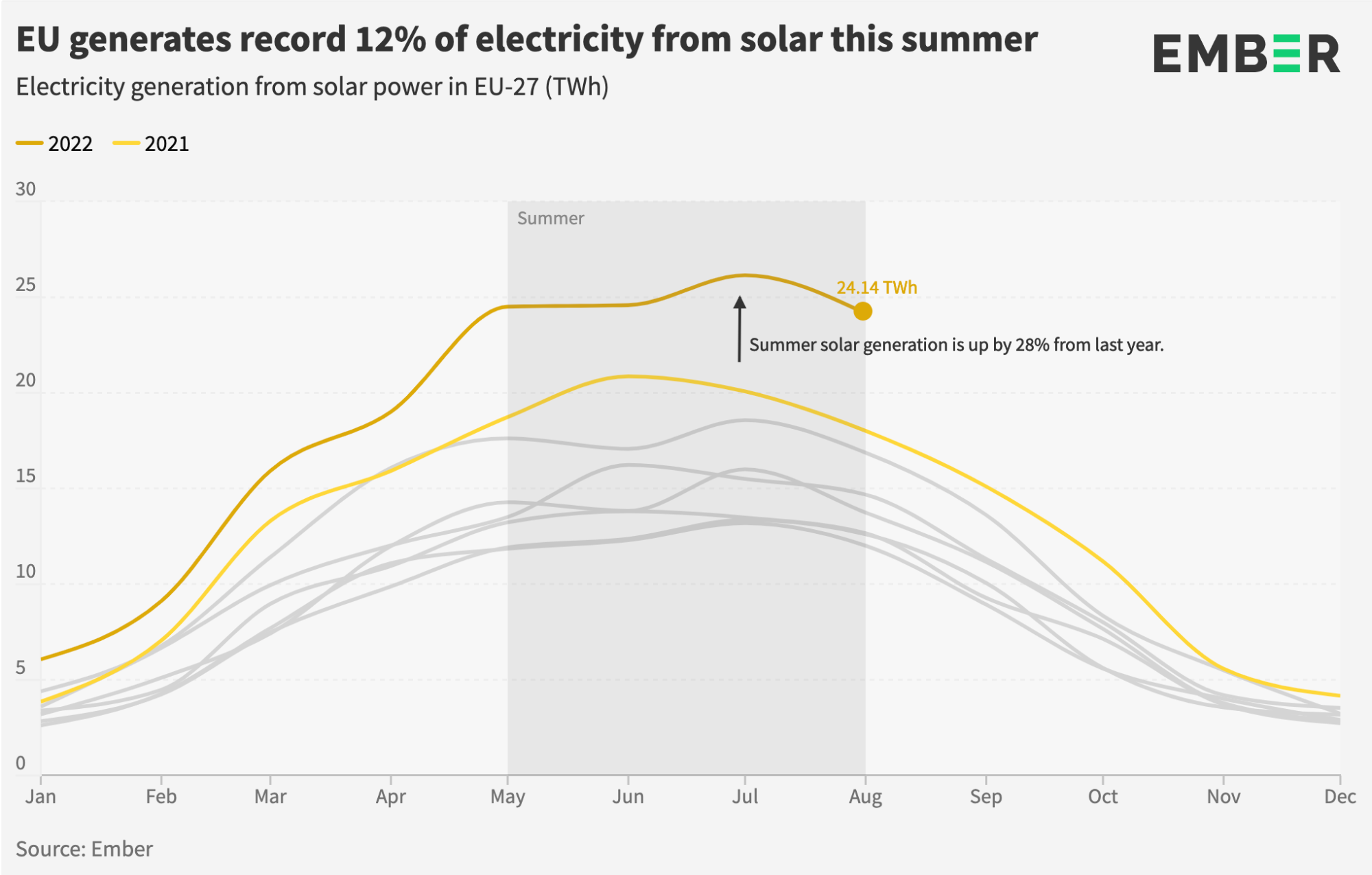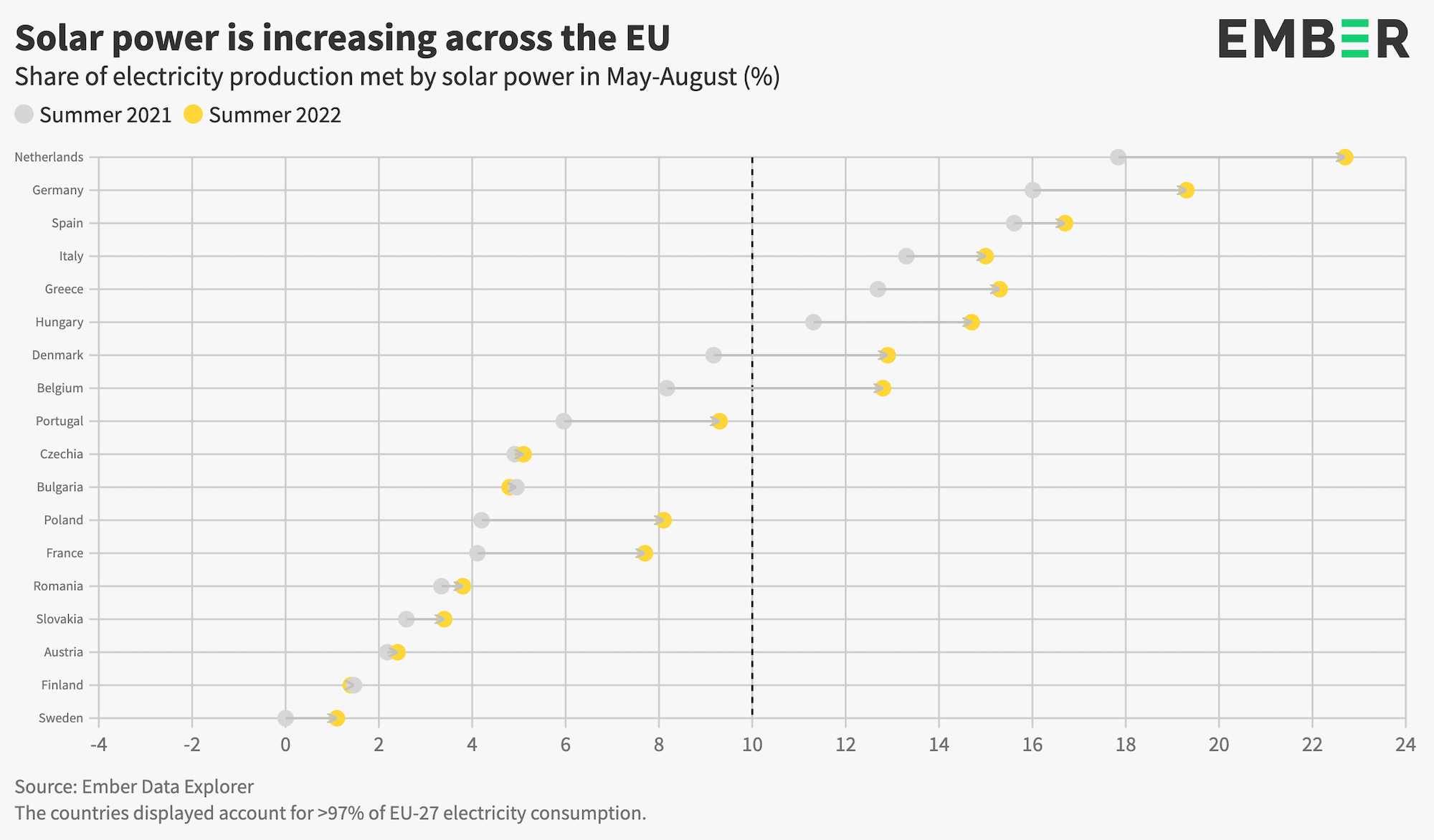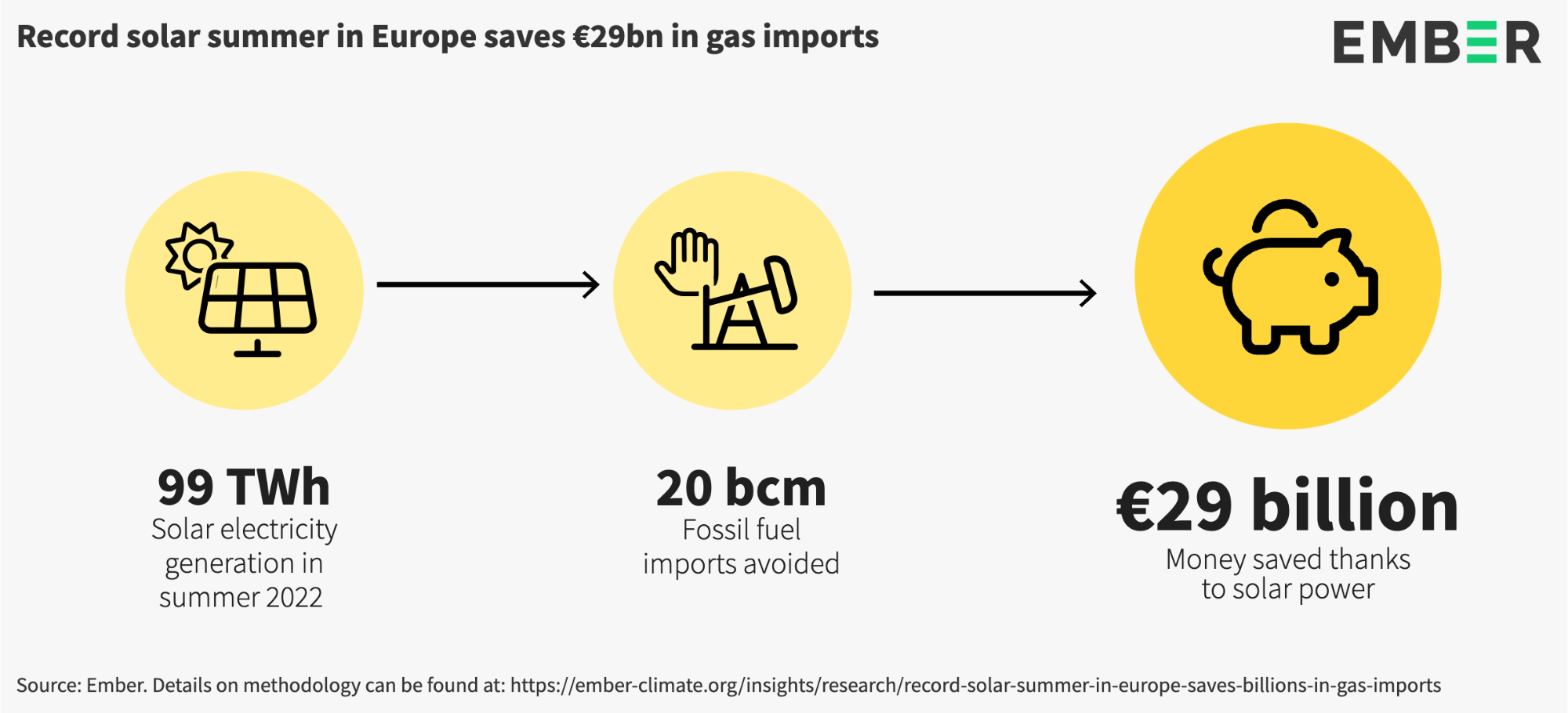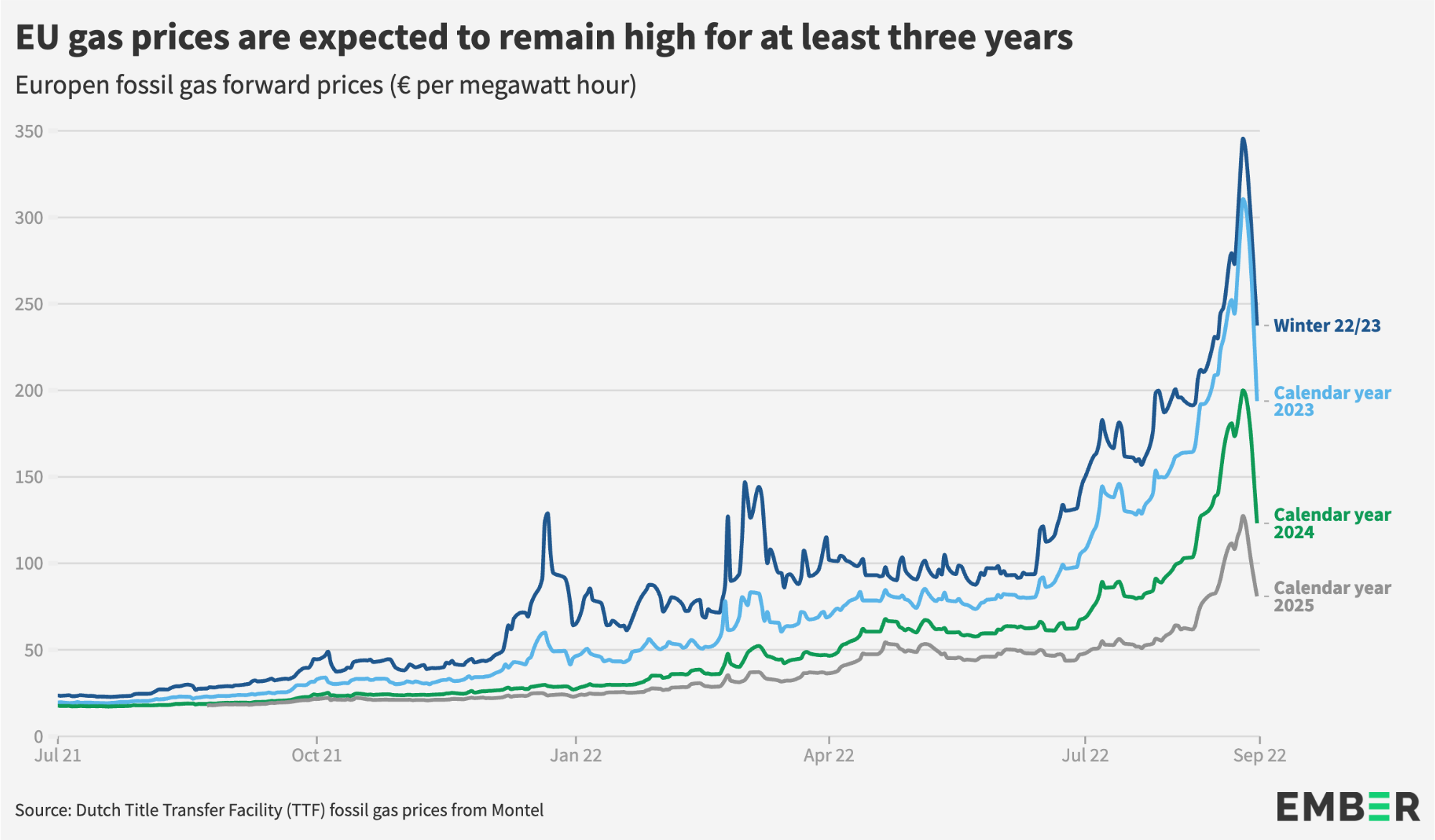Highlights
12%
Share of solar in EU electricity, May-Aug 2022
€29bn
Potential cost saving of avoided fossil gas imports
About
The report analyses Ember’s monthly electricity generation data for the European Union, calculating the potential cost saving in avoided fossil gas imports as a result of the increase in solar power in summer 2022.
Executive summary
Record solar summer in Europe saves €29bn in gas imports
Dries Acke Policy Director at SolarPower Europe
Every megawatt of energy generated by solar and renewables is fewer fossil fuels we need from Russia. Solar offers direct energy price relief to European households and industries. As European leaders are looking at emergency measures to this unprecedented gas crisis, they must look at adopting national solar roll-out programmes now, using the funds available under the Recovery and Resilience Facility.
Record solar summer
EU generates record 12% of electricity from solar this summer
Europe is breaking solar records every year, with the pace of solar deployment accelerating. This trend needs to continue to match 1.5C and REPowerEU pathways.
In this chapter:
The largest increase in terawatt hours of solar generation since 2018 was in Poland, which increased solar generation 26 times, followed by 5-fold increases in Finland and Hungary, and 4-fold rises in Lithuania and the Netherlands.
In terms of the largest share of solar, the Netherlands is leading the race for the second year in a row, scoring a 23% solar share in the power mix – significantly above the 18% value in 2021, and well ahead of Germany (19%) and Spain (17%). It is notable that the Netherlands is the highest in the EU, despite modest irradiation as a more northerly country. This can be attributed to the Netherlands’ 30% increase in installed capacity in 2021 (11 to 14 GW).
Conclusion
Light at the end of the tunnel
Solar power is already helping Europe get off expensive fossil gas. The ongoing energy crisis makes it more critical than ever to accelerate the deployment of solar.
The solar records set this summer helped keep the lights on and reduced the EU’s now critical gas consumption, providing short-term relief to the soaring cost of energy. With skyrocketing fossil gas prices expected to continue for several years, Europe can ease the crisis by urgently stepping up its deployment of solar. This would also be beneficial for the climate – by 2035, our modelling shows that solar would need to achieve as much as ninefold growth to put Europe on a pathway compatible with 1.5C.
Most European countries have already increased their ambition in response to the current crisis. The European Commission’s recent REPowerEU proposal aims to double solar capacity by 2025 compared to 2020 values as part of reaching an updated 45% renewable energy target in 2030. To make sure solar energy keeps bringing benefits to European citizens, it is essential to confirm this new 45% target in the upcoming EU parliament vote on the revised Renewable Energy Directive.
While ambitious targets are critical, their execution is equally important. Solar power is quick to deploy, but barriers prevent its rapid deployment in many European countries. Ember’s recent analysis shows that plans for the upcoming years fall short of what is needed. This is largely due to permitting bottlenecks, with several countries exceeding the legally binding limits of project development times.
Now is the time for Europe to cut the red tape and unleash the power of solar. This is essential not only for climate targets but, perhaps most of all, for the security of the continent and our electricity bills.
Supporting Material
Methodology
Electricity data, including solar power
Monthly electricity generation is from Ember’s dataset (see methodology and download data), and the EU data is taken from ENTSO-E.
Fossil gas avoided cost calculations
It has been assumed that, due to the costs of producing electricity from gas power plants being the most expensive, any solar power generated replaced gas in the electricity mix. A gas plant efficiency rate of 50% (gross calorific value/higher heating value) has been used. Dutch Title Transfer Facility (TTF) fossil gas prices on 31 August 2022 have been used to calculate gas cost savings. A conversion factor of 1 bcm = 9.7 TWh has been applied.
Acknowledgements
Sarah Brown, Reynaldo Dizon, Hannah Broadbent, Nicolas Fulghum
Header photoWorkers installing solar panels in Spain
Credit: July Alcantara
Media Coverage
- Bloomberg
- Der Spiegel
- Financial Times
- Le Figaro
- Associated Press
- Portugal's Público
- Spain's 20 Minutos
- Germany's Focus
- Germany's Die Welt
- Germany's Stern
- Germany's Süddeutsche Zeitung
- Turkey's Anadolu Agency
- Belgium's Le Soir
- Montel
- Portugal's Correio da Manhã
- Germany's Die Zeit
- NL's Algemeen Dagblad
- Belgium's Het Nieuwsblad
- Belgium's Het Laatste Nieuws
- Belgium's Het Belang van Limburg
- Austria's The Kronen Zeitung
- El Español
- The Guardian
- World Economic Forum











